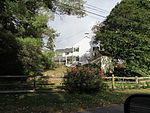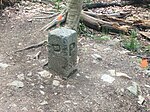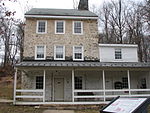Samuel Lindsey House
Delaware Registered Historic Place stubsHouses completed in 1875Houses in New Castle County, DelawareHouses on the National Register of Historic Places in DelawareNational Register of Historic Places in New Castle County, Delaware ... and 2 more
Second Empire architecture in DelawareUse mdy dates from August 2023
Samuel Lindsey House is a historic home located at McClellandville, New Castle County, Delaware. It was built in the 1870s, and is a 2+1⁄2-story, Second Empire style brick dwelling with a mansard roof. It has a five bay front facade and an original two story, brick wing extending from the rear elevation. Built as a single dwelling, it has been converted into apartments at one time, and also used as a school.It was added to the National Register of Historic Places in 1983.
Excerpt from the Wikipedia article Samuel Lindsey House (License: CC BY-SA 3.0, Authors).Samuel Lindsey House
New London Road,
Geographical coordinates (GPS) Address External links Nearby Places Show on map
Geographical coordinates (GPS)
| Latitude | Longitude |
|---|---|
| N 39.707563 ° | E -75.776615 ° |
Address
Samuel Lindsey House
New London Road
19711
Delaware, United States
Open on Google Maps










